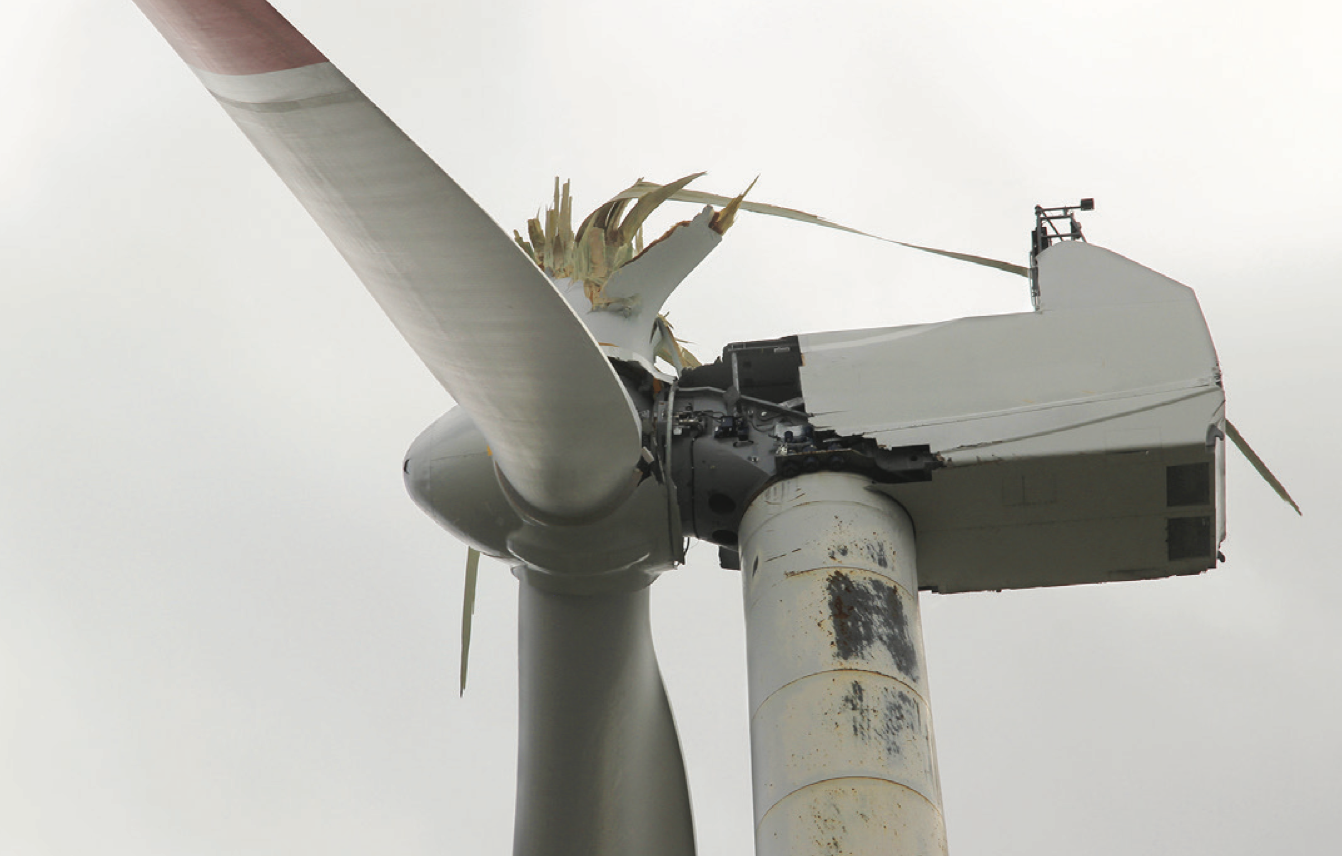By John Colquhoun, UK head, EFI Global; Eric Lalli, AVP, Canada, EFI Global; Tonya Scheuerman, forensic consultant, EFI Global
Amid global uncertainty and to meet future demands, major investments have been allocated to renewable energy, including wind power. According to the 2021 Global Wind Report, energy supplied by wind has tripled in the last 10 years and is projected to increase a further 38% by 2025. With this technology, wind turns the propeller-like blades of a turbine rotor, which then spins a generator and creates electricity. In recent years, the number of utility-scale wind turbine installations has grown dramatically. What might this mean for the claims industry?
Wind turbines are constantly running, so electrical and mechanical malfunctions are largely unavoidable. Given the growing blade sizes and remote locations that turbines are erected in, replacing a turbine can cost in excess of US$3 million. Taking the repair route has its own challenges; it requires different certifications for turbines that operate onshore versus offshore and specific expertise to ensure repairs are accurately specified and executed. Whether you choose to repair or replace a turbine, material cost, downtime and business interruption must be evaluated to inform a decision.
Identifying the cause of failure
Following a wind turbine claim, there are unique challenges associated with identifying the root cause of damage and factors that may have contributed to the failure. If a lightning strike damaged one or more blades, our engineering team from EFI Global can investigate the claim to determine the extent and cause of damage, and provide recovery options. Understanding the root cause helps differentiate between normal wear and tear failures versus those that are sudden and accidental, or due to manufacturing defects. Since wind turbines can have original equipment manufacturer (OEM) warranties for up to ten years, subrogation should always be explored for losses where the cause is not certain.
Conducting a risk assessment
Considering that the European market, as an example, incorporated wind turbines decades ago versus the North American market that is basically playing catch-up, turbines installed in Europe are far older and in many cases past the manufacturers warranty period. In North and South America, the installed base is relatively new, with a great portion of turbines that are still covered by the manufacturers warranty.
Turbine blade failures are the most common cause of catastrophic losses, with fires coming in a close second. Turbine blades can fail due to major lightning strikes or due to design flaws, manufacturing defects and installation errors. Most wind turbine fire loss events can be attributed to electrical or mechanical malfunctions. Converter and capacitor cabinets, transformers and emergency brakes tend to be the main culprits. Some of these fires are the result of electrical short-circuiting, overloading and cable failure, while others are environmental in nature due to lightning strikes. When wind turbine losses occur — whether they are caused by environmental conditions, design flaws, fabrication issues or lack of maintenance — businesses need the help of knowledgeable experts to recover.
Real world example
Following a lightning storm in 2020, a major wind farm company discovered that blades had been seriously damaged on several turbines and blades had broken away. Data indicated that there was a vibration issue on some turbines and the hydraulic braking system was low on fluid on others. EFI Global experts conducted an investigation, made the following observations and took action quickly.
- A detached blade was found more than 200 yards from the turbine tower.
- The base of the blade was still attached to the turbine with a complete fracture near the root of the blade.
- Our materials engineer examined the blade on site and found indications of blade design and manufacturing deficiencies.
- The engineer removed samples from the blade in suspect areas for detailed examination at our laboratory.
- The metal lightning receptors and down conductor system were examined, and samples were removed for analysis.
- The wind turbine farm operating data was downloaded for analysis.
- The site investigation, data and laboratory analysis determine that the blade damages were caused by a deficient design of the lightning protection system built into the blades.
- The investigation informed the wind turbine farm owners of actions that could be taken to prevent future failures.
Working as technical liaisons between the wind farm owner, manufacturer and insurance carrier, EFI Global investigators identified the cause of loss, quantified the damages, and provided repair and restoration options to quickly return the wind turbine to service and prevent recurrence
When equipment that’s part of the energy infrastructure is impacted by a disaster event, EFI Global is there with innovative solutions to assist with damage mitigation, minimizing business income loss, and preserving all viable options. Our team of experienced professionals are Global Wind organisation (GWO) certified allowing them to respond immediately to wind turbine claims anywhere in the world, carry out in-depth investigations, and support clients in dealing with a full range of losses.
> Learn more — read about EFI Global’s wind turbine claims services here.
Tags: catastrophic event, Claims, claims industry, EFI, EFI Global, Energy, environment, Europe, Investigation, Investigations, Property, Property damage, renewable energy, renewable technology, Technology, View on property, wind power, wind turbine

